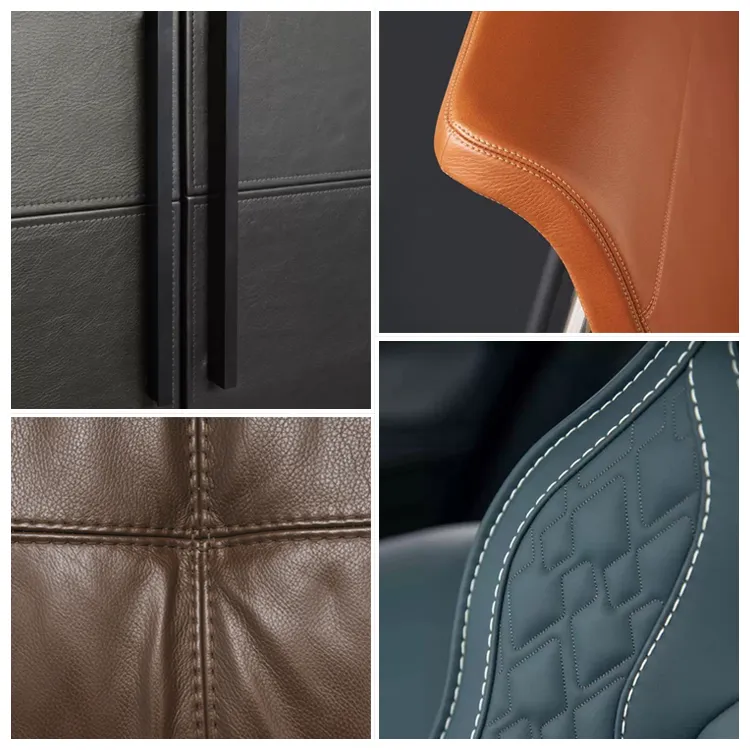Sewing Techniques for FIBC Belts and Their Applications in Packaging Solutions
Understanding FIBC Belt Sewing Techniques and Importance
Flexible Intermediate Bulk Containers, commonly known as FIBCs or bulk bags, play an essential role in the transportation and storage of various bulk materials across industries such as agriculture, pharmaceuticals, construction, and food processing. One of the critical aspects of FIBC manufacturing is belt sewing, a technique that significantly contributes to the strength, durability, and functionality of these containers. This article delves into the intricacies of FIBC belt sewing, its methods, materials, and its importance in ensuring the quality and reliability of bulk bags.
The Basics of FIBC Construction
FIBCs are designed to carry substantial loads, often ranging from 500 to 2000 kilograms. The construction of these bags involves various components, including the body fabric, filling spouts, and discharging outlets. However, the seams and the belt that secure the bag are vital as they bear the weight of the contents and withstand stress during handling and transportation. Therefore, the quality of sewing and materials used are paramount to ensuring the integrity of the FIBC.
Belt Sewing Techniques
The process of belt sewing involves multiple techniques that can vary based on the application and specific requirements of the FIBC. Here are some commonly utilized methods
1. Lock Stitching This is one of the most prevalent sewing methods for FIBCs. It involves using a single needle and two threads looped together, forming a secure stitch. Lock stitching offers an excellent balance of strength and elasticity, making it suitable for heavy-duty applications.
2. Chain Stitching Chain stitch is another technique often used for FIBC sewing. This method employs a single needle that creates a continuous chain of stitches, which provides flexibility and durability. Chain stitching can be particularly advantageous when working with stretchable materials or when enhanced flexibility is desired.
3. Overlapping Seams In certain scenarios, overlapping seams may be employed to enhance the strength of the joints. This method involves placing two fabric pieces over each other and sewing them together. Overlapping seams can help distribute the load more evenly, which is essential for larger FIBCs.
4. Reinforcement To further enhance the durability of the seams, additional reinforcement materials may be sewn into the stitching. This is especially relevant for high-stress areas, such as the corners of FIBCs. Reinforcement not only adds to the strength of the bag but also helps prevent tearing.
Materials Used in FIBC Sewing
fibc belt sew

The materials chosen for belt sewing and the overall FIBC construction significantly impact the bag's performance. Common materials include
- Polypropylene (PP) Fabric This is the most widely used material for FIBCs due to its excellent tensile strength, chemical resistance, and low weight. It is also UV resistant, making it suitable for outdoor storage.
- Polyester While not as commonly used as PP, polyester offers superior flexibility and can be treated for additional strength and durability. It is also resistant to mildew and fading, making it a good option for FIBCs exposed to various environmental conditions.
- Sewing Threads The sewing thread itself must also be carefully selected. Polyester and polypropylene threads are the most commonly used due to their strength and resistance to chemicals. Additionally, threads may be treated to enhance UV resistance and overall durability.
Importance of Quality Control in Sewing
Quality control is an essential aspect of the FIBC manufacturing process, particularly regarding belt sewing. Ensuring that all seams are adequately sewn and reinforced can prevent bag failures during use. Common quality control measures include
- Visual Inspection Manufacturers often conduct visual inspections of seams to ensure they meet specified standards.
- Load Testing Bags are subjected to load testing to simulate real-world conditions and ensure they can safely hold their intended weight.
- Certification Many FIBC manufacturers obtain certifications to demonstrate their compliance with industry standards, assuring customers of the quality and safety of their products.
Conclusion
In conclusion, belt sewing is a critical component in the manufacturing of FIBCs, directly affecting the strength, durability, and reliability of these essential containers. By employing various sewing techniques and materials, manufacturers can produce FIBCs that meet the diverse needs of various industries. As the demand for bulk storage and transportation solutions continues to grow, the importance of high-quality FIBC construction, particularly in belt sewing, cannot be overstated. By prioritizing quality control and leveraging advanced sewing techniques, the industry can ensure that FIBCs remain safe and effective in their purpose for years to come.
-
Heavy Duty Leather Sewing Machine: A Must-Have for Professional LeatherworkNewsMay.28,2025
-
Leather Sewing Machine: Essential for High-Quality LeathercraftNewsMay.28,2025
-
Extra Heavy Duty Sewing Machine for Premium Leather ApplicationsNewsMay.28,2025
-
Walking Foot Cylinder Arm Sewing Machine: Precision and Power CombinedNewsMay.28,2025
-
Industrial Cylinder Arm Sewing Machine: Engineered for High-Performance StitchingNewsMay.28,2025
-
Cylinder Bed Sewing Machine: A Powerful Solution for Precision StitchingNewsMay.28,2025
-
Zigzag Sewing MachineNewsMay.12,2025





























